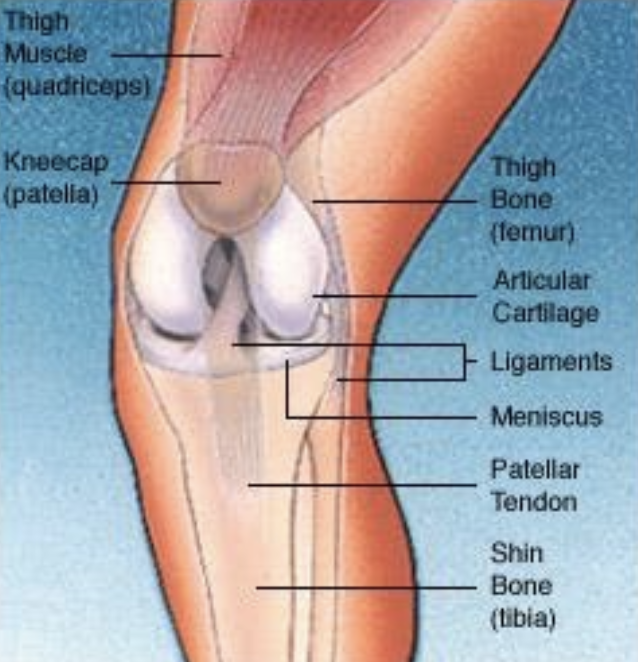Understanding Your Knee Replacement
If your knee is severely damaged by arthritis or injury (remember that time you decided to show your nephew how you stole bases in your day?), it may be hard or downright impossible for you to do simple activities such as walking and climbing stairs. You may even begin to notice pain while you are sitting or lying down. Often resurfacing the damaged and worn surfaces of your knee with total knee replacement surgery is the best answer to get back your mobility.
Anatomy
Your knee is the largest joint in your body and, as you know if you are reading this, keeping this joint functioning normally is essential to everyday activities. The knee is made up of the lower end of the thighbone (femur), which rotates on the upper end of the shinbone (tibia), and the kneecap (patella), which slides in a groove on the end of the femur. The joint surfaces where these three bones touch are covered with articular cartilage, a smooth, cushiony substance that enables them to move easily.
A thin, smooth tissue liner called the synovial membrane covers the remaining surfaces of your knee. This membrane releases a special fluid that lubricates your knee, reducing friction to nearly zero in a healthy knee.
Common Causes of Knee Pain and Loss of Knee Function
The most common cause of chronic knee pain and disability, and therefore reasons for total knee replacement surgery, is arthritis including: osteoarthritis, rheumatoid arthritis, and traumatic arthritis.
Osteoarthritis usually occurs in people 50 years of age and older and often in individuals with a family history of arthritis. The cartilage that cushions the bones of your knee softens and wears away.
Rheumatoid arthritis is a disease in which your synovial membrane becomes thickened and inflamed, producing too much synovial fluid that overfills your joint space.
Traumatic arthritis can follow a serious knee injury (i.e. the stolen base, the Chubby Checkers’ Twist contest). A knee fracture or severe tears in your knee ligaments may damage your articular cartilage over time.
Surgery
You will most likely be admitted to the hospital on the day of your surgery. There you will be evaluated by the anesthesia team to determine which type of anesthesia will be best for you during your total knee replacement surgery.
The replacement itself takes usually only two hours. Your orthopaedic surgeon will remove your damaged cartilage and bone and then position the new metal and plastic joint surfaces to restore the alignment and function of your knee.
Many different types of designs and materials are currently used in total knee replacement surgery, nearly all of which consist of three components: the femoral component (made of a highly polished strong metal), the tibial component (made of a durable plastic often held in a metal tray), and the patellar component (also plastic).
Is Total Knee Replacement for You?
Anyone with symptoms serious enough for total knee replacement surgery understands how important it is to get back your mobility without pain. If you have symptoms like pain or stiffness that limits your everyday activities or at rest, chronic inflammation and swelling, a knee deformity, and your pain fails to improve with any other treatments, talk to your doctor about a total knee replacement.









